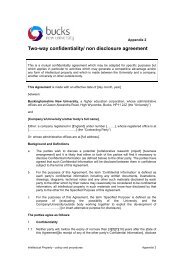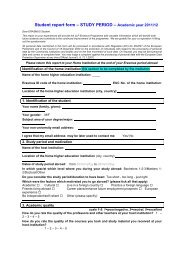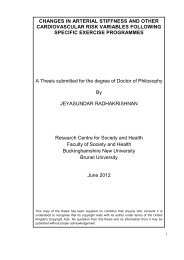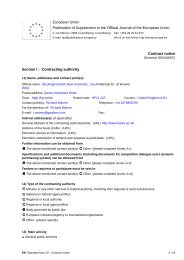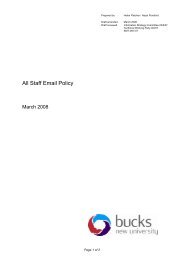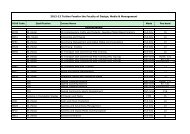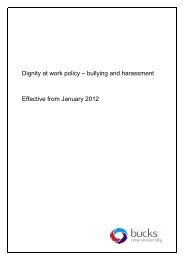Buckinghamshire New University style guide
Buckinghamshire New University style guide
Buckinghamshire New University style guide
You also want an ePaper? Increase the reach of your titles
YUMPU automatically turns print PDFs into web optimized ePapers that Google loves.
Hyphenation (see also dash)<br />
The hyphen (-) looks like a short dash, but the hyphen and the dash are very<br />
different; whereas the hyphen unites, the dash separates (except when it is used to<br />
elide).<br />
Certain words and phrases tend to evolve from separation to linkage. The trend in<br />
English is for frequently used word combinations to grow together from two words<br />
to one, sometimes passing through a hyphenated stage, for example from<br />
electronic mail through e-mail to email.<br />
A–Z <strong>guide</strong><br />
H<br />
The following principles are useful to know:<br />
• Two or more adjectives before a noun that act as one idea (one-thought<br />
adjectives) are connected with a hyphen.<br />
Example:<br />
This is a low-budget film.<br />
• Use a hyphen in expressions where words have become linked by usage to<br />
express one idea.<br />
Examples:<br />
mother-in-law, top-notch, fine-tune, X-ray.<br />
• When written as words, fractions and cardinal numbers consisting of two words<br />
are hyphenated.<br />
Examples:<br />
one-fourth, two-thirds.<br />
• Hyphenate words prefixed by ex-, self-, or all-, and some words prefixed by<br />
cross-.<br />
Examples:<br />
ex-wife, self-evident, all-inclusive, cross-reference.<br />
<strong>Buckinghamshire</strong> <strong>New</strong> <strong>University</strong> Style Guide 25



